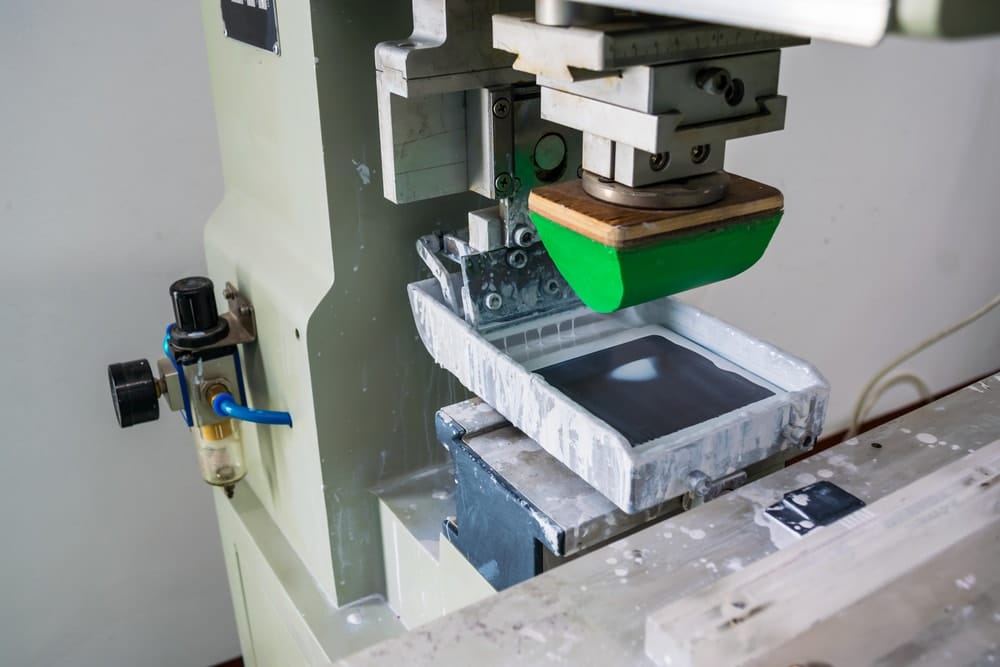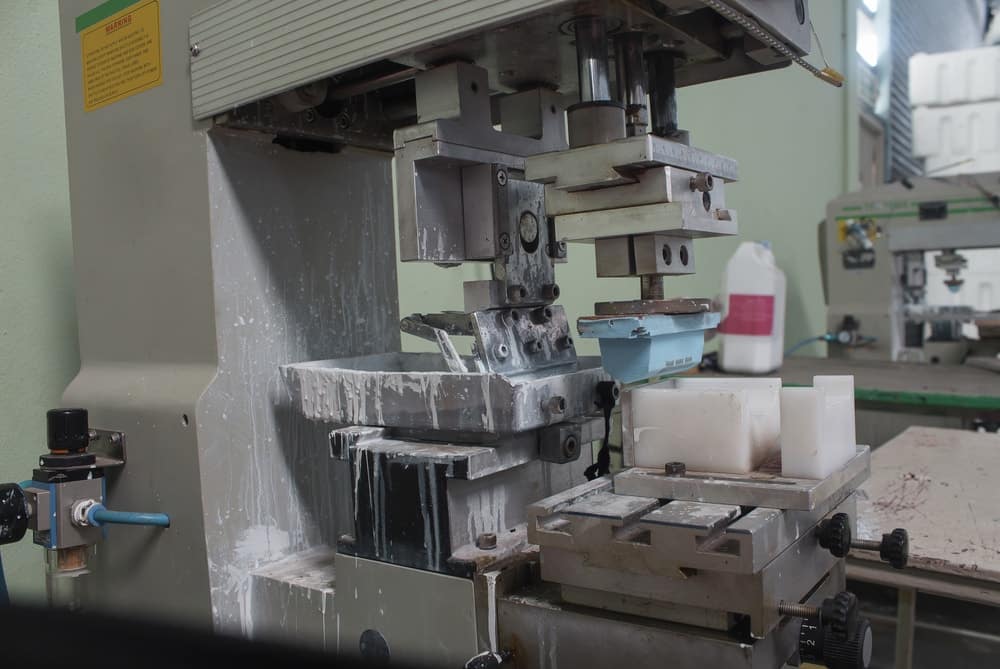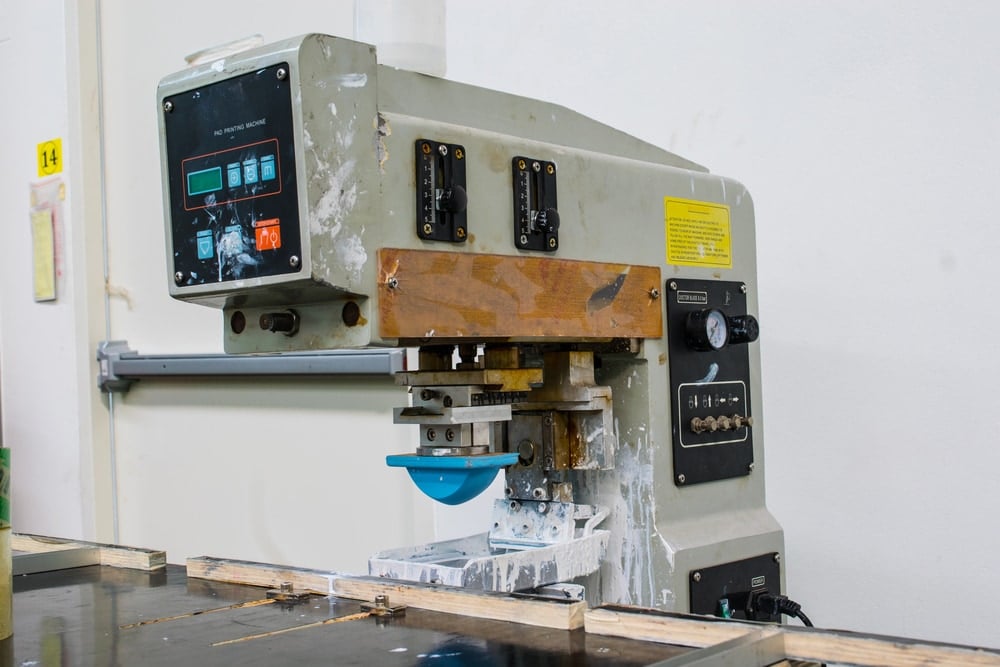The Ultimate Guide to Pad Printing
Pad printing is the process of printing a two-dimensional image on a complex three-dimensional item. Common in the promotional, toy, automotive, aerospace, appliance, clothing, and industrial printing sectors, pad printing has grown in popularity over the last 50 years, proving itself more versatile than alternatives like screen printing and hot stamping. With pad printing, detailed images can be printed on irregular surfaces and complicated substrates.
What Is Pad Printing?
In pad printing, a silicone pad transfers an engraved image from a 2D printing plate (or cliché) to a 3D object. Also called indirect offset or gravure printing, this process involves the pad picking up ink from the etching and pressing it into the object. The pads are typically round or rectangular, though the shape and size depend upon the project.
Pad printing is an efficient method for achieving high-quality images on unusually shaped substrates, such as curved, hollow, spherical, cylindrical, angled, and textured items.
Pad Printing Components
A pad printing machine is relatively simple, and emerging technology continues to streamline the process. There are three essential components to a pad printing machine:
- Pad: The pad is used to transfer the image onto the 3D object. Different printing applications require different pads—the hardness of the silicone, as well as the shape and size of the pad, will vary depending on the complexity of the image and the dimensions of the object.
- Ink cup: Ink is deposited on the 2D plate via the ink cup, which is comprised of a ring and a cup. The ring is usually made of ceramic, metal, or plastic. Ceramic is typically the preferred choice because it’s less likely to leave scratches on the plate. The ink is left only in the etched part of the plate, so the pad can pick it up for the next step in the printing process.
- Printing plate: The image to be printed is etched on the plate via a photopolymer or laser process. In photopolymer plate-making, a photosensitive plate is exposed to UV light to create the image. Although it is time-consuming, photopolymer plate-making is the most cost-effective option. The faster option is laser plate-making, which uses a carbon dioxide or fiber laser to create the image. Its computerized nature delivers accurate, replicable results.
How Does Pad Printing Work?
Pad printing started to grow in popularity in the 1970s, though there is historical evidence of the indirect offset printing technique dating back 200 years. This is how pad printing machines work today:
- The photopolymer or laser plate-making process etches a plate with the desired image.
- The ink cup moves over and fills the engraved plate with ink.
- The cup is removed, taking the excess ink with it and exposing the ink-filled etching.
- The pad is pressed onto the plate, and the ink is transferred from the artwork onto the silicone pad. As the pad moves away from the plate, the ink cup moves over the plate again, preparing to repeat the process.
- Meanwhile, the printing pad presses onto the object, creating the printed product.
This printing cycle repeats until the production run is complete.
The Benefits of Pad Printing
Although it is generally more expensive than screen printing, pad printing offers enough advantages for many applications that the results outweigh the cost. These are the main benefits of choosing pad printing over other methods:
- Exceptional image clarity and resolution
- Prints on unusually shaped and irregular objects as well as flat surfaces
- Produces precise, repeatable results throughout large and small production runs
- Silicone pads and image plates are customizable for every project
- Low setup costs
- Space-efficient equipment
- Process is relatively easy to learn
- Wide selection of substrate dimensions and materials, including sensitive or delicate substrates
- Ability to print more than one image on a product at a time
- Various ink compositions: one-component ink for thermoplastics and two-component ink (ink mixed with a hardening chemical) for objects that will experience chemical or high-stress exposure
Pad Printing Applications
Companies in many industries rely on pad printing for sharp, durable images and text on critical equipment. Whether you need to print aesthetically pleasing graphics, important labeling, or user information, pad printing can provide the detailed results you’re looking for on objects of any shape and material.
-
Medical
The medical industry uses pad printing to print essential information on minimally-invasive devices, syringes, valves, surgical instruments, and more. These items must be manufactured and printed under sanitary conditions. At Pad Printing Technology, we maintain an ISO Class 8 Clean Room for these purposes. This room meets ISO 14644-1:2015 cleanliness requirements for contaminant-free printing.
-
Aerospace
Printed components for the aerospace industry must be clear, durable, accurate, and compliant with strict industry regulations. For over 35 years, Pad Printing Technology has delivered superior laser marking and other services to our partners in the aerospace industry. We print switches, buttons, coding, identification labels, regulatory information, panel and control marking, brand names, logos, and more.
-
Automotive
Printed parts for the automotive industry must be long-lasting, legible, and regulation-compliant. We can pad print on all sorts of materials, including painted and anodized metals, stainless steel, fiberglass, plastics, wood, and glass. Decorative and essential printing may include buttons, panels, tools, and gauges. Our ISO 9001:2015 certified facility guarantees the highest standards for product quality, employee safety, and customer satisfaction.
-
Electronics
Because aesthetics have become increasingly crucial to attracting consumer attention, designing and printing consumer electronics are more important than ever. Pad Printing Technology offers pad printing, laser marking, screen printing, and hot/foil stamping for a wide array of electronic components. We can double-hit pad print images for greater ink opacity and durability, or we can pad print a UV clear coat over them.
-
Industrial
For other industrial printing applications, we use our closed-cup printers, which can quickly and consistently print designs with tight tolerances. These printers allow us to change images with minimal machine downtime for a more cost-effective printing run. We pass these savings on to our customers.
Expert Pad Printing Services from Pad Printing Technology
At Pad Printing Technology, we specialize in 3D computer-aided designing, printing, and prototyping. We deliver pad printing and laser marking services to customers in the aerospace, automotive, medical, electronics, and commercial/industrial markets. We continue to invest in new technology and systems to ensure we provide the highest quality printing possible.
Since 1994, we’ve been providing high-quality printing services for a wide range of materials, including plastics, metal, wood, glass, composites, Kraton, paper, rubber, leather, nylon, and foam. Our dedicated customer care team can offer expert guidance on design, material selection, and more. Contact us to get started on your printing project.






